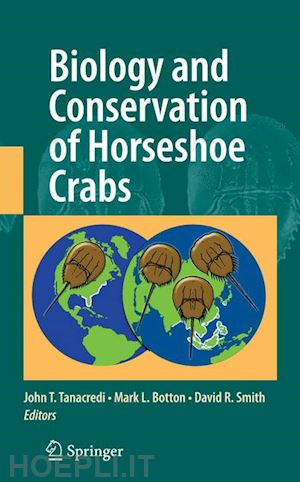Biology.- Limits on the Global Distribution of Horseshoe Crabs (Limulacea): Lessons Learned from Two Lifetimes of Observations: Asia and America.- Horseshoe Crabs – An Ancient Ancestry Revealed.- The Ecological Importance of Horseshoe Crabs in Estuarine and Coastal Communities: A Review and Speculative Summary.- Relationships Between Sandpipers and Horseshoe Crab in Delaware Bay: A Synthesis.- Horseshoe Crabs, Their Eco-biological Status Along the Northeast Coast of India and the Necessity for Ecological Conservation.- American Horseshoe Crabs, Limulus polyphemus, in Mexico: Open Possibilities.- Basic Habitat Requirements of the Extant Species of Horseshoe Crabs (Limulacea).- The Relationship Between Small- and Large-Scale Movements of Horseshoe Crabs in the Great Bay Estuary and Limulus Behavior in the Laboratory.- Ecology of Horseshoe Crabs in Microtidal Lagoons.- Phylogeography, Demographic History, and Reserves Network of Horseshoe Crab, Tachypleus tridentatus, in the South and East China Seaboards.- Genetic Structure of Japanese Populations of Tachypleus tridentatus by mtDNA AT-Rich Region Sequence Analysis.- Reproductive Competition and Sexual Selection in Horseshoe Crabs.- Vision in Horseshoe Crabs.- Sperm Attachment on the Egg of Malaysian King Crab, Carcinoscorpius rotundicauda.- Distribution and Development of Limulus Egg Clusters on Intertidal Beaches in Delaware Bay.- Comparisons in Prosomal Width and Body Weight Among Early Instar Stages of Malaysian Horseshoe Crabs, Carcinoscorpius rotundicauda and Tachypleus gigas in the Laboratory.- Emergence Behavior of Juvenile Tachypleus tridentatus Under Simulated Tidal Conditions in the Laboratory and at Two Different Sediment Temperatures.- Distribution of Juvenile Horseshoe Crabs in Subtidal Habitats of DelawareBay Using a Suction-Dredge Sampling Device.- Conservation.- History of Horseshoe Crab Harvest on Delaware Bay.- Biomedical Applications of Limulus Amebocyte Lysate.- The Effect of Hemolymph Extraction Volume and Handling Stress on Horseshoe Crab Mortality.- Horseshoe Crabs in Hong Kong: Current Population Status and Human Exploitation.- Comparative Status and Assessment of Limulus polyphemus with Emphasis on the New England and Delaware Bay Populations.- An Integrative Approach to Horseshoe Crab Multiple Use and Sustainability.- Strategies to Conserve and Enhance Sandy Barrier Habitat for Horseshoe Crabs (Limulus polyphemus) on Developed Shorelines in Delaware Bay, United States.- Conservation Program for the Asian Horseshoe Crab Tachypleus tridentatus in Taiwan: Characterizing the Microhabitat of Nursery Grounds and Restoring Spawning Grounds.- The Effects of Water Quality on Horseshoe Crab Embryos and Larvae.- Heavy Metal Concentration in Horseshoe Crab (Carcinoscorpius rotundicauda and Tachypleus gigas) Eggs from Malaysian Coastline.- A Discussion of Horseshoe Crab Management in Five Countries: Taiwan, India, China, United States, and Mexico.- Clinical Evaluation, Common Diseases, and Veterinary Care of the Horseshoe Crab, Limulus polyphemus.- Aquaculture Methods and Early Growth of Juvenile Horseshoe Crabs (Limulus polyphemus).- Larval Culture of Tachypleus gigas and Its Molting Behavior Under Laboratory Conditions.- Diet Composition of Juvenile Horseshoe Crabs: Implications for Growth and Survival of Natural and Cultured Stocks.- Effect of Sediment Type on Growth and Survival of Juvenile Horseshoe Crabs (Tachypleus tridentatus).- The Conservation Network of Horseshoe Crab Tachypleus tridentatus in Taiwan.- The History of Horseshoe Crab Research and Conservation inJapan.- Public Awareness and Community-Based Conservation for the Horseshoe Crab at Saikai National Park in Nagasaki Prefecture, Japan.- Public Participation in Studies on Horseshoe Crab Populations.- Green Eggs and Sand: A Collaborative Effort of Scientists, Teachers, Resource Managers, and Stakeholders in Educating About Limulus polyphemus.- Community Building: An Integrated Approach to Horseshoe Crab Conservation.











